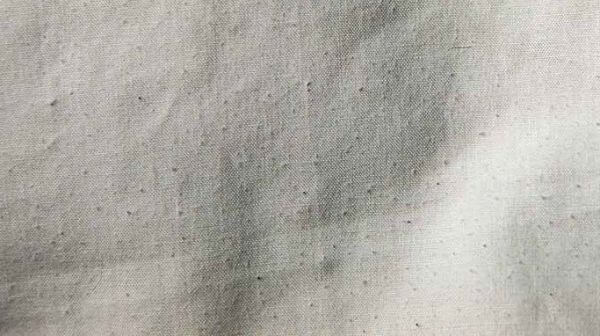Picture this: you slip into bed, ready for a restful night’s sleep, only to find that your once-smooth and luxurious bed sheets are covered in unsightly little balls. These pesky fabric pills, also known as pilling, can be frustrating and puzzling for many people. If you’ve ever wondered why your bed sheets develop these tiny balls of fabric, you’re not alone.
Here we will delve into the reasons behind pilling and explore potential solutions to keep your bed sheets looking pristine and pill-free. Let’s unravel the mystery together!

Table of Contents
Understanding Pilling
Pilling is a common phenomenon that occurs when fibers on the surface of a fabric break or loosen, resulting in tiny balls or fuzz. Bed sheets, like many other fabrics, can be prone to pilling due to several factors, including fabric quality, fiber type, fabric construction, and wear and tear.
Causes of Pilling
- Fiber Type: Different types of fibers have varying levels of resistance to pilling. Natural fibers such as cotton and linen are more prone to pilling compared to synthetic fibers like polyester or microfiber. The shorter and looser the fibers, the higher the likelihood of pilling.
- Fabric Quality and Construction: Bed sheets made from lower quality or loosely woven fabrics are more susceptible to pilling. Cheaper fabrics often contain shorter staple fibers that tend to break more easily and create pills. Additionally, tightly woven fabrics can generate friction and cause fibers to rub against each other, leading to pilling over time.
- Friction and Abrasion: Frequent use and friction against rough surfaces can accelerate the pilling process. This includes activities like tossing and turning in bed, abrasive washing, or contact with rough skin or surfaces.
Prevention and Maintenance Tips
Invest in Quality Bed Sheets
Opt for high-quality bed sheets made from durable and long-staple fibers. Look for reputable brands known for their attention to fabric quality and construction.
Choose Synthetic Blends
Consider bed sheets that blend natural fibers with synthetic fibers like polyester or nylon. Synthetic fibers tend to be more resistant to pilling and can enhance the longevity of your sheets.
Follow Care Instructions
Carefully read and follow the care instructions provided by the manufacturer. Avoid using harsh detergents, high heat settings in the dryer, or rough washing techniques that can cause excessive friction and contribute to pilling.
Wash with Care
Wash your bed sheets separately from items that may cause abrasion, such as towels or clothing with zippers or hooks. Use a gentle or delicate cycle on your washing machine to minimize friction.
Avoid Overloading the Washing Machine
Overloading the machine can lead to excessive rubbing and tangling of the sheets, increasing the chances of pilling. Allow enough space for the sheets to move freely during the wash cycle.
Trim Pills
If pilling does occur, use a fabric shaver or gently remove the pills with a fabric comb or electric razor. Be careful not to snag or damage the fabric in the process.
Rotate Your Sheets
Consider having multiple sets of bed sheets and rotate them regularly. This allows each set to have an opportunity to rest and recover from wear, reducing the chances of pilling.
Consider Fabric Softeners or Conditioners
Using fabric softeners or conditioners specifically designed for reducing pilling can be beneficial. These products can help keep the fibers lubricated, reducing friction and preventing pills from forming. However, be cautious as some softeners can leave residue on the fabric, affecting its absorbency.
Air Dry or Use Low Heat
Whenever possible, air dry your bed sheets instead of using a dryer. If you choose to use a dryer, opt for a low heat setting to minimize the potential damage caused by high temperatures.
Mend Small Snags
Address any loose threads or snags promptly to prevent them from worsening and contributing to pilling. Use a needle or fabric glue to secure loose threads and prevent further damage.
Consider Pillowcase Protectors
Pillowcases are often the first areas to show signs of pilling due to regular friction from contact with hair and skin oils. Using pillowcase protectors can provide an additional layer of protection and reduce direct contact between the fabric and oils, minimizing pilling.
Conclusion:
Pilling is a common issue that bed sheets can face over time, but with proper care and preventive measures, you can prolong the lifespan of your sheets and maintain their smooth and luxurious appearance.
By investing in high-quality fabrics, following care instructions, and minimizing friction and abrasion, you can significantly reduce the occurrence of pilling. Remember, it’s important to be proactive in maintaining the quality of your bed sheets to ensure a comfortable and aesthetically pleasing sleep environment.

Alex P. Davis has a BA in Interior Design from The New York School of Interior Design and 10 years of experience expertly designing sophisticated interiors.
